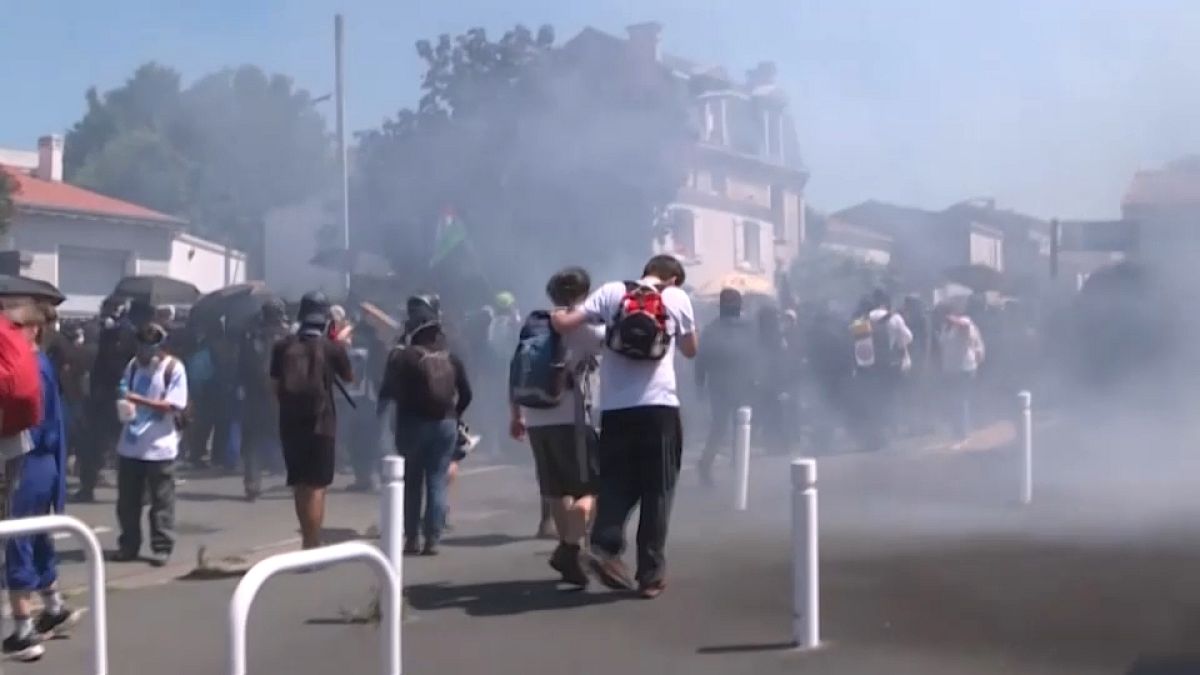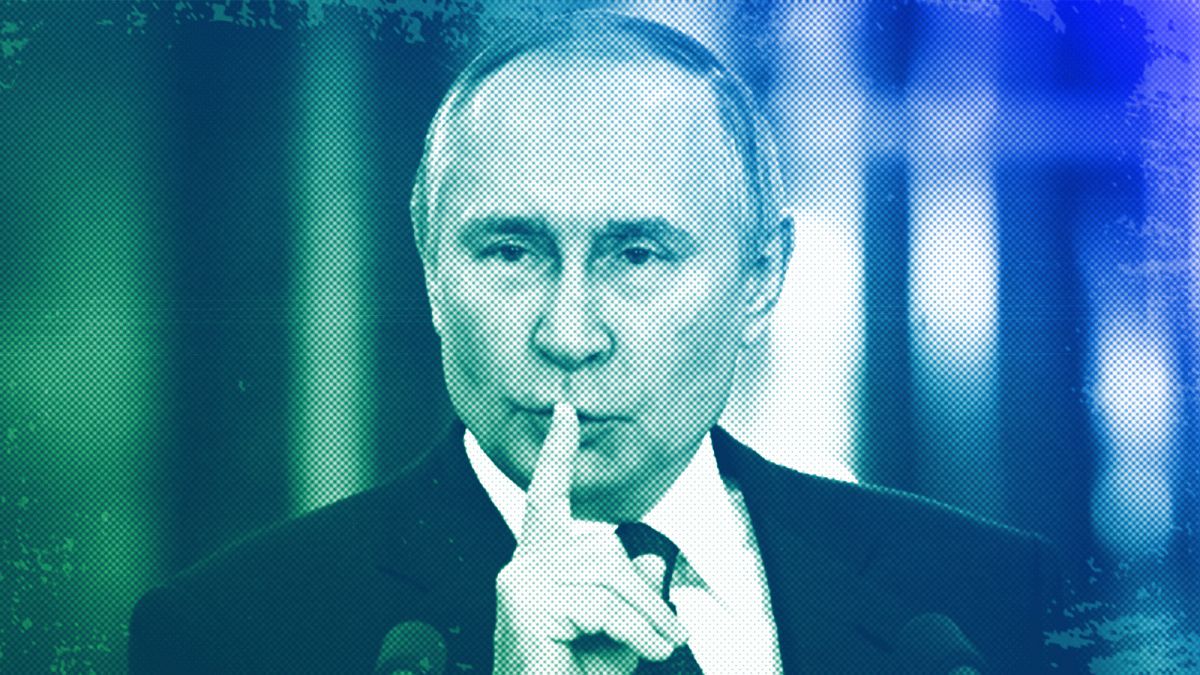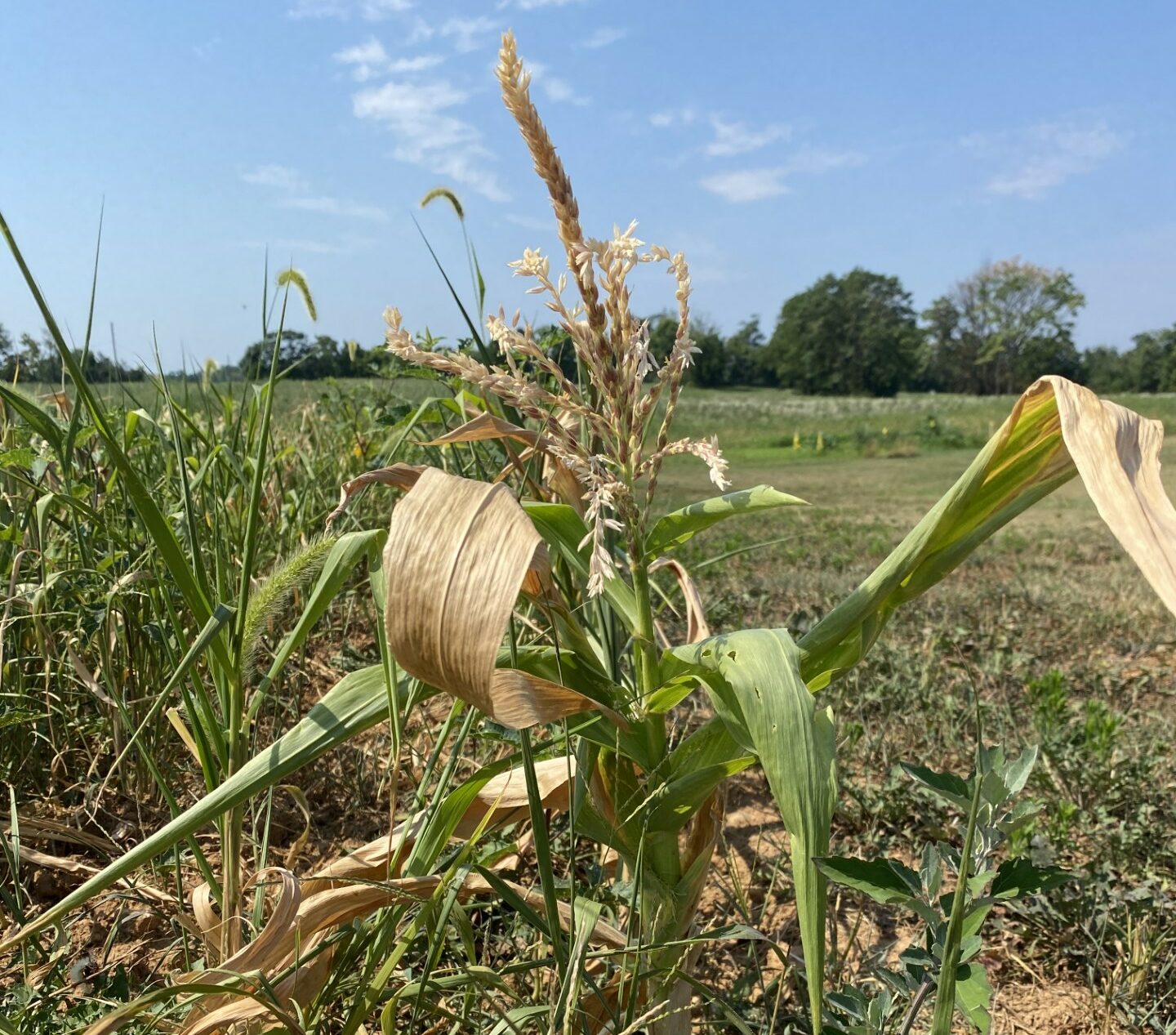World
Zelenskyy asks Brussels to defuse Polish farmer dispute
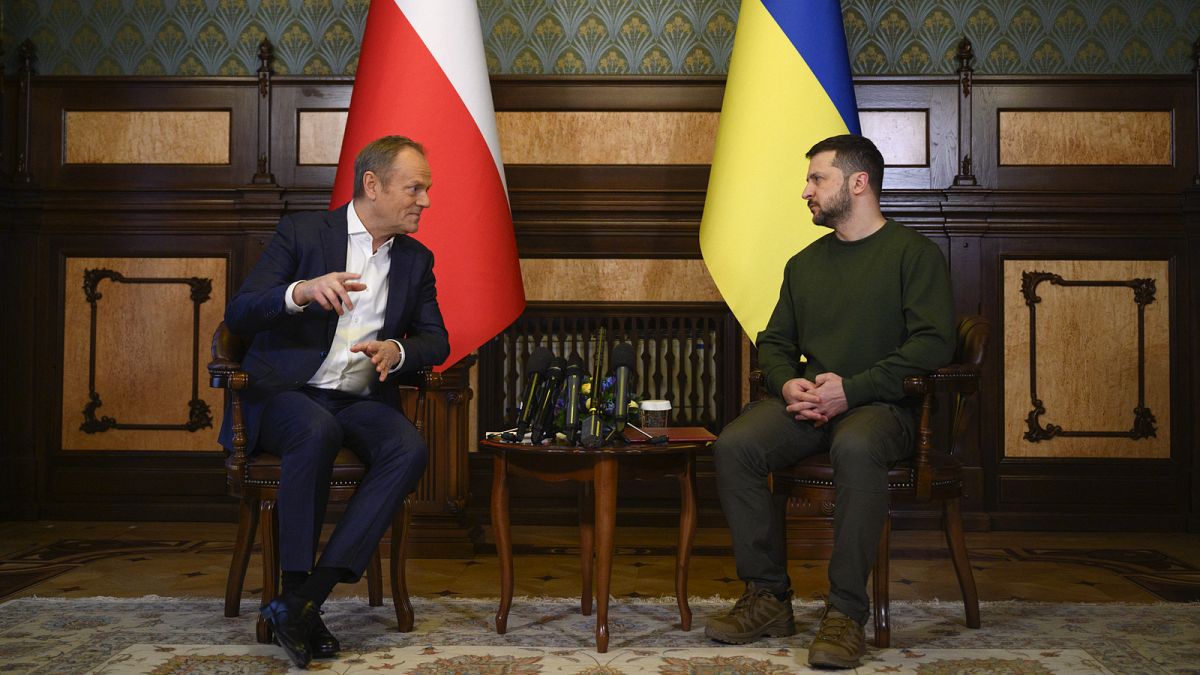
President Volodymyr Zelenskyy has called on the European Commission to step in to avoid what he calls “political manipulation” of a dispute between Ukraine and Poland over agricultural imports.
As Polish farmers blockaded the border with their war-torn neighbour for a second week in protest over unfair competition, Zelenskyy warned Brussels that unless it intervenes, Moscow could profit from the strained relations between Kyiv and Warsaw.
In a video statement published on Wednesday, Ukraine’s President directly urged Polish Prime Minister Donald Tusk to join him personally for talks on the blockaded border crossing, adding that he had also invited a representative of the European Commission.
“We must preserve Europe’s unity. This is fundamentally in the interests of the European Union,” Zelenskyy said.
“We have had enough of Moscow’s presence in our lands. We have had enough misunderstandings. We should not humiliate each other, we should not humiliate either Ukrainian or Polish farmers,” he added.
“We need unity. We need solutions—between us, Ukraine and Poland, and at the level of the whole of Europe.”
But when asked on Thursdays about the direct appeal, the Commission could not confirm if the executive had received a formal invitation from the Ukrainian government. A spokesperson admitted the situation was “complex” and “evolving” and stressed negotiations between Ukraine and the bordering countries were the only way to design a durable solution. The last technical meeting took place on Tuesday.
“(We’re trying to find) a solution to this that satisfies, on the one hand, the Commission’s commitment to continue supporting Ukraine’s economy, including its agri-food sector, which is of systemic importance to its economy,” the spokesperson said.
“On the other hand, we’re trying to find solutions to protecting sensitive EU market sectors when there’s evidence of market disturbance. And so that’s the balance we’re trying to strike.”
Poland’s agriculture minister Czesław Siekierski told TV channel TVN24 on Wednesday that the ongoing talks with his Ukrainian counterparts are “very difficult.” Talks are focused on potential quotas for the import of Ukrainian foodstuffs.
His deputy minister Michał Kołodziejczak added that Brussels needed to get involved. “If the European Commission does not get involved in solving this problem, if this problem is not addressed strategically, Poland will actually isolate itself from products from Ukraine, but they will reach the Western European market,” Kołodziejczak said.
Long-standing grain dispute intensifies
Tensions over Ukrainian imports have been brewing in Poland and other eastern EU member states since April last year.
The EU lifted customs duties and quotas on a wide range of Ukrainian goods, including agri-food products, in a bid to help the country boost its trade floods amid the Russian aggression and avoid global food shortages.
But farmers in five bordering countries – Poland, Hungary, Slovakia, Romania and Bulgaria – complained that the move had caused a glut of cheap Ukrainian foodstuff in their countries, depressing prices for local producers, taking up storage and tightening the belt on families in rural communities.
The complaints led Warsaw and other capitals to unilaterally ban the domestic sale of Ukrainian cereals to protect farmers, initially sparking outrage in Brussels.
But with farmers’ discontent threatening to undermine EU solidarity with Ukraine and the rural vote considered pivotal in crunch European elections in June, the Commission struck a temporary deal that allowed four Ukrainian products – wheat, maize, rapeseed and sunflower seed – to transit through the neighbouring countries but without staying in their markets for domestic consumption or storage.
The arrangement came to an end in September. However, Poland, Hungary and Slovakia defied the European consensus and maintained their prohibitions, which are not coordinated and cover goods beyond the aforementioned four products.
Donald Tusk, who became Poland’s prime minister in mid-December, has inherited the previous Law and Justice government’s struggles to maintain his show of support for Ukraine while also appeasing farmers and truckers, who say their livelihoods have been hit by the show of solidarity to Kyiv.
Tusk’s cabinet has so far kept the restrictions, causing frustration in Brussels. The recent wave of farmers’ protests across Europe, however, has re-awakened discontent as Polish producers call for the grain ban to be expanded to Ukrainian fruit, vegetables and sugar, which they say also are driving down their prices.
A proposed EU regulation, which is still under discussion, would allow member states to apply “remedial measures” on Ukrainian imports in case of market turmoil at the local level. The new regulation would also enable the automatic re-introduction of tariffs if trade flows of three “sensitive products” – poultry, eggs and sugar – spike.
The Commission hopes this new system will be enough to convince Poland, Hungary and Slovakia to lift their unilateral bans. Otherwise, legal action might be launched.
“Poland maintains its unilateral blockade against imports from Ukraine. And one has to ask the question if that was functioning as it was intended,” a Commission spokesperson said on Thursday.
The months-long grain dispute has threatened to severely strain the relationship between the neighbouring nations and other Western allies. Warsaw has been a staunch backer of Zelenskyy’s efforts to withstand Russia’s invasion, and has welcomed more Ukrainian refugees fleeing war than any other EU country.
But as the standoff worsens, the Ukrainian leader has stepped up its rhetoric. In his video message, Zelenskyy denounced Polish farmers who he says have “flagrantly dumped” Ukrainian grain in demonstrations over recent weeks.
“This is the grain that our farmers and peasants cultivate with great difficulty, despite all of the hardships caused by Russia’s brutal aggression,” Zelenskyy said.

World
Celine Dion Makes Triumphant Comeback at Paris Olympics Opening Ceremony — Watch Full Performance

ad
World
95 Libyan nationals arrested in South Africa at suspected secret military training camp
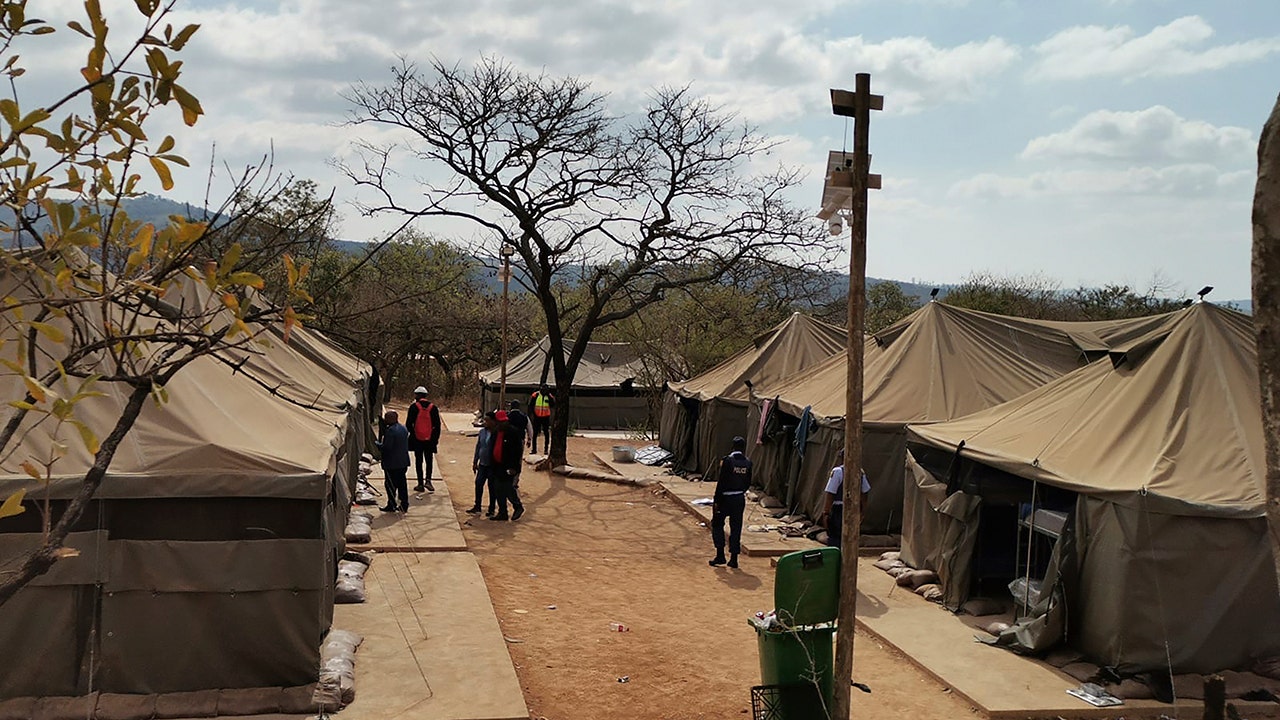
South African police arrested 95 Libyan nationals in a raid on a suspected secret military training camp on Friday and authorities said they were investigating whether there were more illegal bases in other parts of the country.
The camp was discovered at a farm in White River in the Mpumalanga province, about 360 kilometers (220 miles) northeast of Johannesburg, police said.
ELEPHANTS KILL TOURIST IN SOUTH AFRICA AFTER HE TRIED TO GET CLOSE TO TAKE PICTURES
National police spokesperson Athlenda Mathe said in a post on the social media site X that the Libyans stated they had entered the country on study visas to train as security guards, but police investigations suggest they have received military training.
The Newzroom Afrika TV news channel broadcast pictures of the site of the arrests, showing a military-style camp with large green and khaki tents set up in a row. Dozens of men were seen lining up as they were arrested. They were wearing civilian clothing.
Local government official Jackie Macie said investigations were ongoing and the owner of the farm would be questioned. He said authorities received information that there were similar secret camps near two other towns in Mpumalanga province.
A camp where 95 Libyan nationals were arrested on suspicion of running an illegal military camp are seen lining up after their arrest on Friday, July 26, 2024 in White River, South Africa. Police say that 95 Libyan nationals were arrested on suspicion of receiving training at a secret military camp in the north of the country. (AP Photo/Bulelwa Maphanga)
The province borders neighboring countries Mozambique and Swaziland and is an area of concern for South African authorities with regards to illegal immigration.
Police and authorities have not said whether the camps are suspected of being connected to a particular group or conflict.
Macie said investigations would establish if there was a network of camps in South Africa and show “why they are here doing military training in our country.”
Police said the men may be linked to crimes reported in communities close to the farm in recent months.
“We have serious cases which have been opened with the police, including cases of rape and armed robberies, which complainants claim were committed by unknown foreigners who seem to be of Asian descent,” said police spokesman Donald Mdhluli.
“We take what we have found here today very seriously because we don’t know who was training them, what were they being trained for and why that training is happening here in South Africa. It may be a threat not only to South Africa but also to the entire southern Africa region.”
Police said the operation to arrest the Libyans and close down the camp began two days ago. Macie said the Libyan nationals had been in the country since at least April.
“The 95 individuals taken into custody are all Libyan nationals and are currently being questioned by the relevant authorities,” Mpumalanga acting provincial police commissioner Maj. Gen. Zeph Mkhwanazi said in a statement.
Mdhluli, the police spokesman, said the country’s security regulator had confirmed that the kind of training that appears to have been taking place at the camp was well beyond the scope of training for security guards.
“The kind of equipment we found here shows that there was intense military training taking place here. This was basically a military base.”
World
Passengers face long, uncertain wait at stations amid rail disruption

A deliberate fire in a signal box about 60 km south of Lille caused the disruption on the northern high-speed line, with traffic halted around 5 a.m. local time on Friday.
Travel was severely disrupted in Lille on Friday, one of the stations affected by the sabotage that hit major French rail lines ahead of the Paris Olympics opening ceremony.
Many passengers waited with hope that soon turned to resignation.
“We’ve been waiting since 10:38 a.m. for the 11:38 a.m. train, and now we’re just waiting for it to arrive at 2:08 p.m.,” said Delphine, one of the stranded passengers.
“It’s still quite a delay, and we’ll be even later since we’re on a secondary route. I work in Avignon at 9 p.m., so it’s going to be very, very tight. We have a concert tonight — will it even happen? This is all very confusing, and we don’t understand what’s going on.”
For one traveller, this was a rough start to the holidays. “The worst case would be if the train is cancelled entirely and we have to buy new tickets for next week. It would shorten our already brief vacation. That would be a huge problem,” said Hippolyte.
When asked if he had been informed of the delays, Hippolyte said he received the notification just before departure.
“At around 10 a.m. this morning, we were told we were an hour late and would be leaving at 1 p.m.”
“It just keeps getting later as the day goes on. Every time we approach the new departure time, it gets pushed back another hour and a half, or half an hour each time.”
A deliberate fire in a signal box about 60 km south of Lille caused the disruption on the northern high-speed line. Traffic was halted around 5 a.m. on Friday.
The recent acts of sabotage on the rail network highlight that the Olympic Games are turning France into a prime target.
The attack disrupted the transport system on the opening day of the Games, causing delays of up to two hours or even cancellations that affected hundreds of thousands of passengers nationwide.
Authorities in Paris have said they are deploying substantial human resources to counter any threats and to ensure the safety of the events.
-

 World1 week ago
World1 week agoOne dead after car crashes into restaurant in Paris
-

 Midwest1 week ago
Midwest1 week agoMichigan rep posts video response to Stephen Colbert's joke about his RNC speech: 'Touché'
-

 News1 week ago
News1 week agoVideo: Young Republicans on Why Their Party Isn’t Reaching Gen Z (And What They Can Do About It)
-

 News1 week ago
News1 week agoIn Milwaukee, Black Voters Struggle to Find a Home With Either Party
-

 Politics1 week ago
Politics1 week agoFox News Politics: The Call is Coming from Inside the House
-

 News1 week ago
News1 week agoVideo: J.D. Vance Accepts Vice-Presidential Nomination
-

 Movie Reviews1 week ago
Movie Reviews1 week agoMovie Review: A new generation drives into the storm in rousing ‘Twisters’
-

 World1 week ago
World1 week agoTrump to take RNC stage for first speech since assassination attempt


